Fantasy Sports Market Size
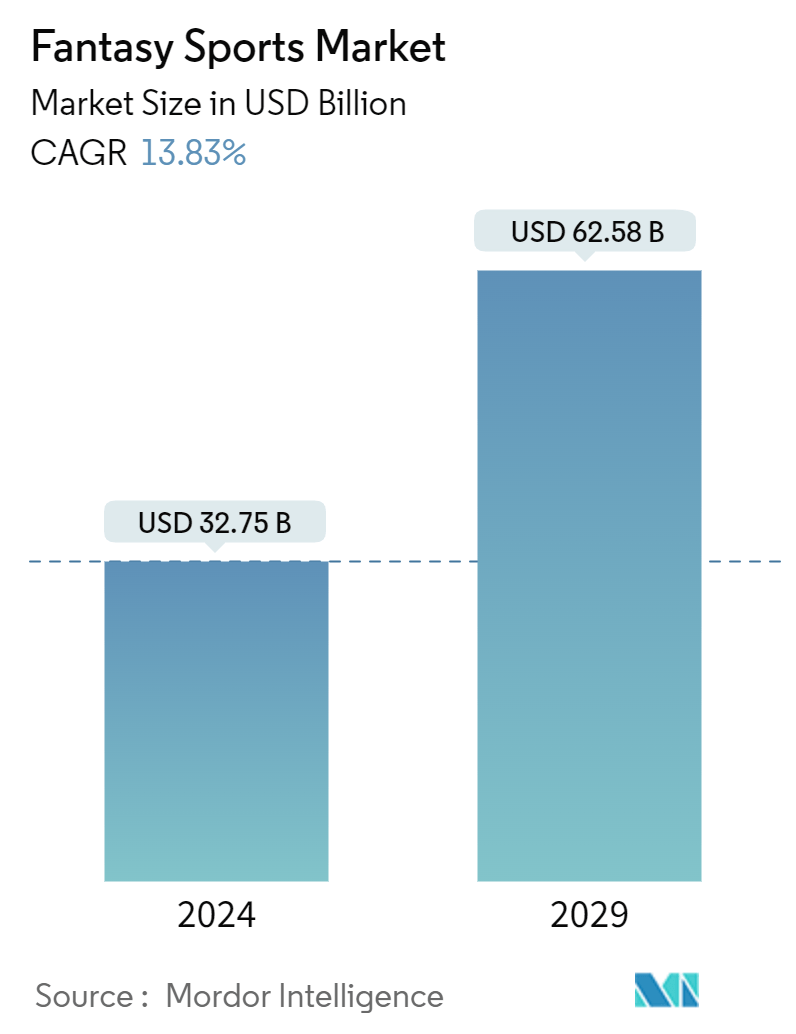
| Study Period | 2019 - 2029 |
| Market Size (2024) | USD 32.75 Billion |
| Market Size (2029) | USD 62.58 Billion |
| CAGR (2024 - 2029) | 13.83 % |
| Fastest Growing Market | Asia Pacific |
| Largest Market | North America |
Major Players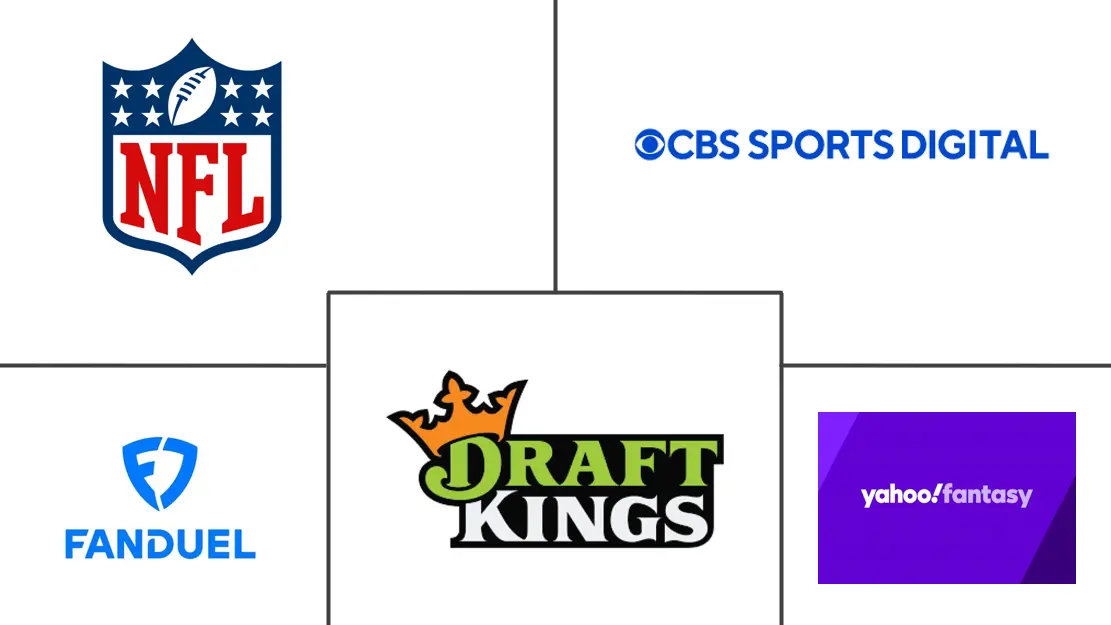
*Disclaimer: Major Players sorted in no particular order |
Fantasy Sports Market Analysis
The Fantasy Sports Market size is estimated at USD 32.75 billion in 2024, and is expected to reach USD 62.58 billion by 2029, growing at a CAGR of 13.83% during the forecast period (2024-2029).
Fantasy sports have become a prominent social phenomenon. The sport's increasing importance at an elite level attracts large investors, fantasy players, and fans alike. From draft parties to brand marketing and sponsorships to playoffs, fantasy sports engage fans with the competition.
A shift in the sporting culture has occurred over recent years with the introduction of several sports leagues, including badminton, football, rugby, basketball, and volleyball. In different countries, the growth of sports has been accelerated by technological progress, increasing use of smartphones, and internet penetration. With an increasing number of individuals participating in, discussing, or playing these sports, an enthusiastic fan base has developed, shaping how fans engage in sports and fueling the growth of fantasy sports.
Sports technology will create opportunities for highly qualified software engineers, data scientists, and cybersecurity professionals. It will likely increase the number of viewers, sponsors, and participation in sporting events, directly impacting sports development.
The growing popularity of players, the emergence of sports leagues, increasing investments in digital and internet infrastructure, and the launch of fantasy football applications to connect with their favorite sporting activity are driving the market growth.
More users should be encouraged to participate in fantasy sports due to awareness about their legality. In parallel, fantasy sports operators are beginning to actively market their products and make a conscious effort to ensure the integrity of their websites or applications by cooperating with professional football leagues.
Despite the problems caused by the COVID-19 pandemic in some fantasy leagues, these leagues continued to operate despite the shortened professional season. Despite the pandemic, the long-term prospects for fantasy sports are anticipated to remain positive. Due to increased interest in legalizing sports betting in the United States, the market has been experiencing a major influx of new players and well-financed new start-ups.
Fantasy Sports Market Trends
Rapid Development of the User Friendly and Smartphone Accessible Applications to Drive the Market Growth
- The ecosystem has driven increased internet penetration and usage of low-cost smartphones among urban and rural populations, monetization through revenue streams like pay-per-download and in-app purchases, and the growth of the fantasy sports market through subscription services, gamers, in-app advertising, incentive-based advertising, etc.
- Computers and the internet are used for all major fantasy sports competitions. The main mechanisms for protecting computerized systems are copyright, which grants authors exclusive rights for the publicity, distribution, and use of original literary works; patents, which give inventors exclusive rights for commercial exploitation of new inventions; and trade secrets protection, which safeguards confidential commercial information from potential abuse. Those who breach confidence can be held accountable through legal action.
- The convenience offered compared to other channels, especially when betting is carried out through a connected mobile device such as a mobile phone, is one of the main drivers of the online sports betting and fantasy sports market.
- Bets can be placed on computers, smartphones, and other connected devices through the Internet. Due to an increase in the number of gamblers who place bets on mobile internet, there is a growing opportunity for market growth.
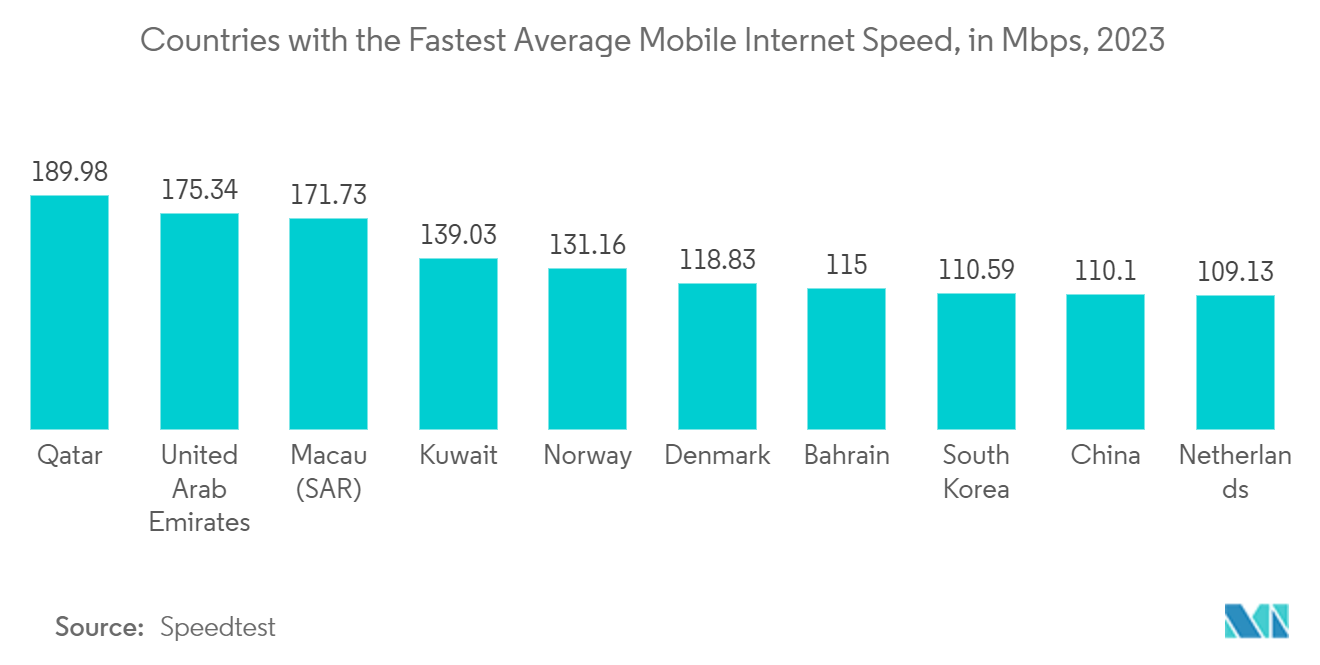
North America to Hold a Significant Market Share
- The North American football fantasy sports market is very strong. The region is expected to experience significant growth over the next few years due to increased demand for football, rising Internet accessibility tools, sports sponsorship, partnerships, acquisitions, and innovations.
- Smartphones, cloud technology, and mobile gaming apps have increased the significance of the online gaming culture, and various state laws are challenging new players to adopt DFS. As 43 of the 50 states in the United States allow daily fantasy sports (Source: Legal Sports Betting), their popularity has significantly increased across the country. However, many legal barriers prevent daily fantasy sports (DFS) from being offered nationwide.
- Several states do not allow daily fantasy sports and have demanded that DFS sites cease operations. Instead of engaging the AG, the sites have stopped offering their services and are working to push laws that would make states that permit daily fantasy sports. The states that do not allow daily fantasy sports include Hawaii, Idaho, Montana, Nevada, and Washington.
- In addition, Canada's gaming industry is very important. It is varied, ranging from gambling on the Internet to fantasy football and multiplayer first-person shooters. A number of important factors, e.g., technology innovation, consumer preferences for new products, changes in public perception, and innovation, have contributed to the expansion of Canada's fantasy gaming market. Interest from international companies wishing to establish a strong presence in Canada has also increased.
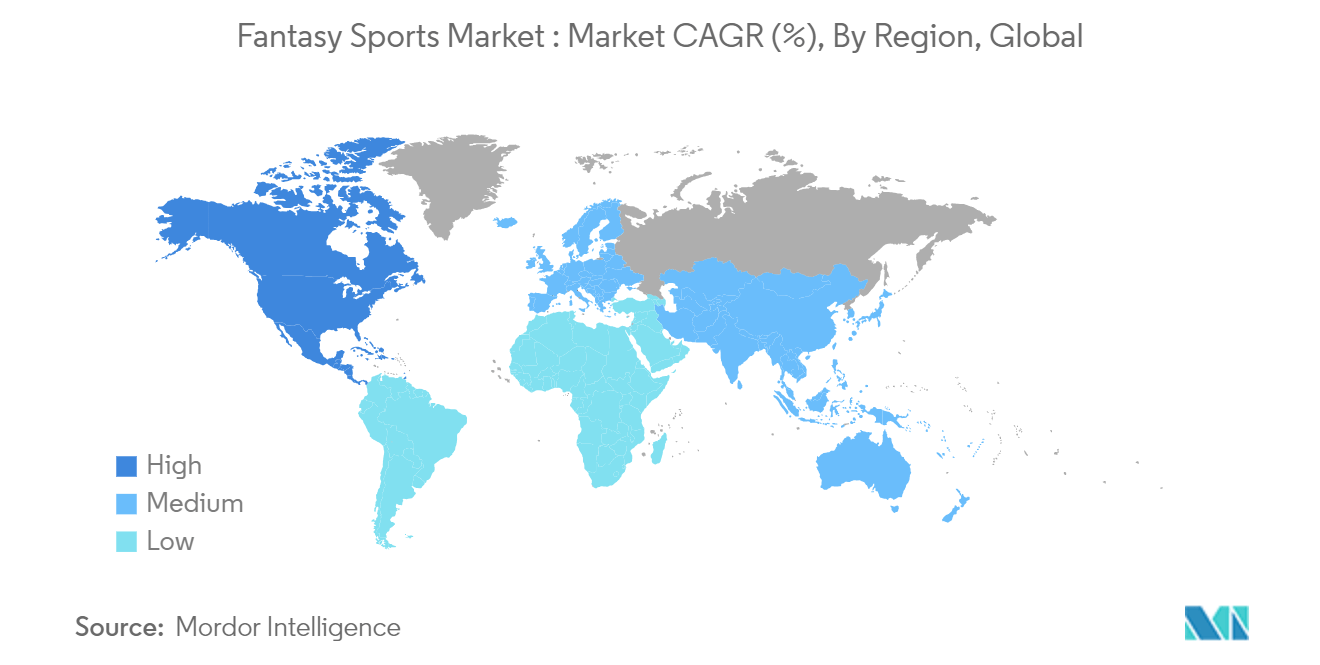
Fantasy Sports Industry Overview
The fantasy sports market is fragmented, and the companies leverage strategic collaborative initiatives to increase their market share and profitability. However, with technological advancements and product innovations, mid-size to smaller companies are growing their market presence by securing new contracts and tapping new markets. Some prominent market players include CBS Sports Digital, DraftKings Inc., NFL Enterprises LLC, FanDuel Group, and Yahoo Fantasy Sports LLC.
- April 2024: The NFL announced a series of community events throughout Detroit as part of the 2024 NFL Draft presented as the NFL is committed to building more robust, more resilient communities by equipping students with the skills to form healthy relationships and protect their mental health. In support of this mission, it will host a Character Playbook Speaker Series to bring together local students for a live panel discussion and to participate in activities to raise awareness of the importance of mental health.
- March 2024: FanDuel announced a new multi-year partnership with the Carolina Panthers as an official sports betting partner. This partnership is part of several initiatives to reach out to sports fans across North Carolina, ahead, and was launched on March 11, 2024, of mobile betting in NC.
Fantasy Sports Market Leaders
-
CBS Sports Digital
-
DraftKings Inc.
-
NFL Enterprises LLC
-
FanDuel Group
-
Yahoo Fantasy Sports LLC
*Disclaimer: Major Players sorted in no particular order
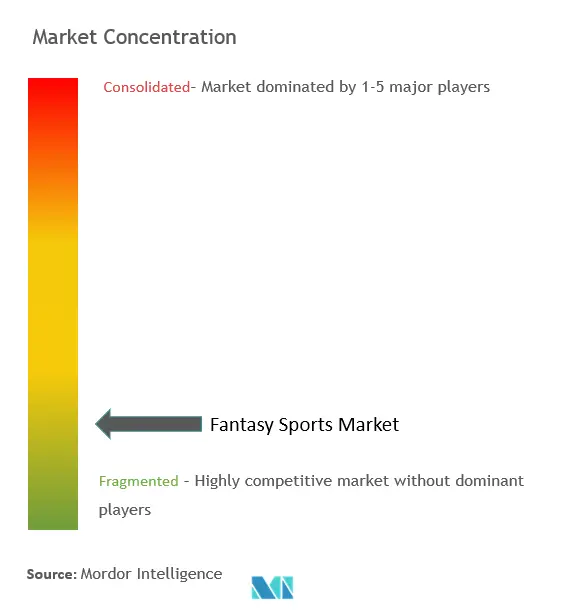
Fantasy Sports Market News
- April 2024: The NCAA approved coach-to-player helmet communication for the 2024 football season. Only one player for each team will be permitted to communicate with coaches while on the field. A green dot on the back of the helmet will identify that player. Communication between the coach and the player will be turned off with 15 seconds remaining when the ball is snapped.
- March 2024: FanDuel announced a series of initiatives and financial support focused on raising awareness of the importance of responsible play during Problem Gambling Awareness Month, where the first phase of the relationship will focus on a pilot program in New Jersey and Ohio that supports self-excluded players with direct access to comprehensive mental health assessments and group support services.
Fantasy Sports Market Report - Table of Contents
1. INTRODUCTION
- 1.1 Study Assumptions and Market Definition
- 1.2 Scope of the Study
2. RESEARCH METHODOLOGY
3. EXECUTIVE SUMMARY
4. MARKET INSIGHTS
- 4.1 Market Overview
- 4.2 Industry Value Chain Analysis
-
4.3 Industry Attractiveness - Porter's Five Forces Analysis
- 4.3.1 Bargaining Power of Suppliers
- 4.3.2 Bargaining Power of Buyers
- 4.3.3 Threat of New Entrants
- 4.3.4 Threat of Substitute Products
- 4.3.5 Intensity of Competitive Rivalry
- 4.4 Assessment of Impact of COVID-19 on the Market
5. MARKET DYNAMICS
-
5.1 Market Drivers
- 5.1.1 Rapid Development of the User Friendly and Smartphone Accessible Applications
- 5.1.2 Technological Advancements might Drive the Market Growth
-
5.2 Market Restraints
- 5.2.1 Low Awareness and Regulatory Framework
- 5.2.2 Competition from Traditional Sports Betting
6. MARKET SEGMENTATION
-
6.1 By Type
- 6.1.1 Football
- 6.1.2 Baseball
- 6.1.3 Cricket
- 6.1.4 Basketball
- 6.1.5 Car Racing
- 6.1.6 Other Types
-
6.2 By Platform
- 6.2.1 Website
- 6.2.2 Mobile Application
-
6.3 By Demographics
- 6.3.1 Under 25 Years
- 6.3.2 Between 25 and 40 Years
- 6.3.3 Above 40 Years
-
6.4 By Application
- 6.4.1 Individual Competition
- 6.4.2 Team Competition
-
6.5 By Geography***
- 6.5.1 North America
- 6.5.2 Europe
- 6.5.3 Asia
- 6.5.4 Australia and New Zealand
- 6.5.5 Latin America
- 6.5.6 Middle East and Africa
7. COMPETITIVE LANDSCAPE
-
7.1 Company Profiles*
- 7.1.1 CBS Sports Digital
- 7.1.2 DraftKings Inc.
- 7.1.3 NFL Enterprises LLC
- 7.1.4 FanDuel Group
- 7.1.5 Yahoo Fantasy Sports LLC
- 7.1.6 ESPN Sports Media Ltd
- 7.1.7 Sleeper (Blitz Studios Inc.)
- 7.1.8 Dream Sports Group
- 7.1.9 RealTime Fantasy Sports Inc.
- 7.1.10 Bovada
- 7.1.11 Flutter Entertainment PLC
- 7.1.12 Low6 Limited
- 7.1.13 Vauntek Inc. (Fantrax)
- 7.1.14 Sorare SAS
8. INVESTMENT ANALYSIS
9. MARKET OPPORTUNITIES AND FUTURE TRENDS
** Subject To AvailablityFantasy Sports Industry Segmentation
Fantasy sports are online games where participants create virtual teams of real-life professional athletes. The market defines the revenue from the sales of fantasy sports platforms and services.
The fantasy sports market is segmented by type (football, baseball, cricket, basketball, and car racing), platform (website and mobile application), demographics (under 25 years, between 25 and 40 years, and above 40 years), application (individual competition and team competition), and geography (North America, Europe, Asia-Pacific, and Rest of the World). The market sizes and forecasts are provided in terms of value (USD) for all the above segments.
| By Type | Football |
| Baseball | |
| Cricket | |
| Basketball | |
| Car Racing | |
| Other Types | |
| By Platform | Website |
| Mobile Application | |
| By Demographics | Under 25 Years |
| Between 25 and 40 Years | |
| Above 40 Years | |
| By Application | Individual Competition |
| Team Competition | |
| By Geography*** | North America |
| Europe | |
| Asia | |
| Australia and New Zealand | |
| Latin America | |
| Middle East and Africa |
Fantasy Sports Market Research FAQs
How big is the Fantasy Sports Market?
The Fantasy Sports Market size is expected to reach USD 32.75 billion in 2024 and grow at a CAGR of 13.83% to reach USD 62.58 billion by 2029.
What is the current Fantasy Sports Market size?
In 2024, the Fantasy Sports Market size is expected to reach USD 32.75 billion.
Who are the key players in Fantasy Sports Market?
CBS Sports Digital, DraftKings Inc., NFL Enterprises LLC, FanDuel Group and Yahoo Fantasy Sports LLC are the major companies operating in the Fantasy Sports Market.
Which is the fastest growing region in Fantasy Sports Market?
Asia Pacific is estimated to grow at the highest CAGR over the forecast period (2024-2029).
Which region has the biggest share in Fantasy Sports Market?
In 2024, the North America accounts for the largest market share in Fantasy Sports Market.
What years does this Fantasy Sports Market cover, and what was the market size in 2023?
In 2023, the Fantasy Sports Market size was estimated at USD 28.22 billion. The report covers the Fantasy Sports Market historical market size for years: 2019, 2020, 2021, 2022 and 2023. The report also forecasts the Fantasy Sports Market size for years: 2024, 2025, 2026, 2027, 2028 and 2029.
What is the future outlook of the Fantasy Sports Market?
The continuous growth of the Fantasy Sports Market is driven by technological innovations, expanding legal acceptance, and increasing global interest in sports.
Fantasy Sports Industry Report
The Global Fantasy Sports Market, highlighted by Mordor Intelligence™ Industry Reports, is witnessing remarkable growth, fueled by the surge in online gaming and digital advancements. Fantasy sports games, allowing users to manage virtual teams of real athletes, are thriving due to secure payment gateways, blockchain technology, and interactive platforms, especially in football and cricket. The market, segmented by sports type, platform, and region, sees North America as a leading revenue contributor, with significant growth in Europe, India, and Brazil. The mobile application platform dominates, offering a rich user experience and attracting a vast user base across diverse demographics. Major players are investing in technological innovations and strategic partnerships, aiming to enhance the fantasy sports experience and explore new opportunities. For detailed market share, size, and revenue growth insights, download a free report PDF sample from Mordor Intelligence™.



